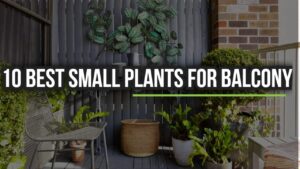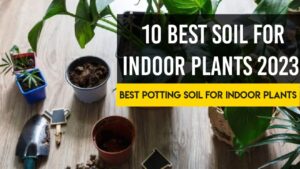Do you want to know the secret of healthy bonsai?
Bonsai Soil!
As it provides nutrients to the bonsai plant, it plays a vital role in the overall health of bonsai.
And the good part is you can make bonsai soil at home.
Keep reading to find out how you can prepare a perfect bonsai soil for your bonsai plant at home,
What is Bonsai Soil?
Firstly, it’s important to know what bonsai soil is and how it is different from other soils.
Bonsai soil provides a strong support for the miniature plant to grow and it also holds moisture and nutrients provided by us for the plant.
Simultaneously, it must be loose enough to let oxygen to reach the roots. It also serves as a shield against the extremes of temperature and moisture fluctuations.
Keep in mind that the amount of soil used in planting this little plant is limited, and you’ll need to supplement it with much-needed plant nutrients and water. As a result, each soil component should be carefully chosen.
By volume, the average garden soil contains 50% solids, 25% water, and 25% air. However, most potting soil, as well as the earth in the garden, is too dense for bonsai. Garden soil also hardens over time. Since bonsai soil almost has no or little actual soil, they are called substrate.
It is said that most bonsai masters have their own personal mix of bonsai soil that they think is perfect for growing the tiny plant in.
There are also different ideal substrate mixtures for different bonsai plants. It may appear difficult to create bonsai soil at home if you are new to the art of nurturing a bonsai tree.
However, you can make bonsai soil at home from the following ingredients with the proper proportion mentioned,
| Organic/ Inorganic Ingredients | Akadama/Turface | Lava Rock | Organic Compost Ingredients |
| Basic Bonsai Mixture | 50% | 25% | 25% |
| Tropical Bonsai Soil Mixture | 40% | 25% | 35% |
| Deciduous Bonsai Soil Mixture | 50% | 30% | 20% |
| Coniferous Bonsai Soil Mixture | 60% | 30% | 10% |
In addition, understanding the ingredients of above mentioned soil and their functions will make your job much easier.
So, lets understand the ingredients of bonsai soil in detail,
If you’re looking to add a touch of nature to your indoor space, an indoor bonsai tree is a great choice. Many online and local retailers offer a variety of indoor bonsai trees for sale, from classic options like the Ficus to more exotic varieties like the Hawaiian Umbrella bonsai. Make sure to research the specific needs of your chosen tree to ensure it thrives in your home.
Basic Ingredients of any Bonsai soil
Coming to the basic ingredients of any bonsai soil, there are two types of soil mixtures ideal for bonsai plants.
What are they?
Organic and inorganic soil
you’ll learn more about them a bit later. First and foremost, you’re going to learn about the perfect soil pH for bonsai plants.
Soil pH
So, What is soil pH?
On a scale of 0 to 14, it indicates how acidic or alkaline the soil is. A number less than 7 is acidic, and a number larger than 7 is alkali.
The quantity of nutrients soluble in soil, water, and hence available to plants is influenced by soil pH.
Some nutrients are better absorbed in acidic environments, whereas others are better absorbed in alkaline environments. But, to make the ideal bonsai soil mixture, you need to maintain a neutral soil pH, which is neither acidic nor basic. A pH value of 6.5 to 7.5 appears to be the best.
Some individuals also believe that the pH of the soil mix should be similar to the pH of the plant’s natural soil. You have to remember this, as it is pivotal for understanding how to make your own perfect bonsai soil mixture.
Most deciduous trees prefer soil with a pH of 6.5 or less. Coniferous trees, on the other hand, prefer a slightly acidic soil with a pH of around 5.5.
What Are the Components?
Now this topic brings us to the components that make up the two bonsai soil mixtures: organic soil and inorganic soil.
Organic Soil Components
Organic soil components include dead plant materials such as peat, fallen leaves, and bark.
In the past, organic soil mixtures were hailed as the best soil mixtures for bonsai plants. However, as our knowledge and understanding of bonsai has grown, most fans now recognise that organic soil components such as peat are not beneficial to a tree’s good health and vigor.
Organic soil components may provide an issue since organic matter degrades over time, reducing drainage. Because some organic components degrade at different rates, it’s difficult to say how soon organic soil becomes toxic.
If you’re set on utilizing an organic soil mix, we suggest going with one that includes pine bark. Once totally dry, most potted composts absorb relatively little water.
Conversely, dry peat might be difficult to adequately water during times of high temperatures, leaving dry areas inside the bonsai’s root ball.
The most major issue with organic soils is that, while they may contain acceptable particle sizes when the bonsai is originally planted, they keep breaking down and the bonsai becomes compact and compressed in the container or pot. The soil becomes airless and drains poorly as it becomes compacted.
Such suffocating, airless soils quickly suffocate the roots, resulting in decaying roots and bad health in a bonsai. Composted bark, sifted to remove any particles less than 2mm, is one of the few organic components that is recommended to put in a bonsai soil mix.
While bark decomposes slowly, it retains its form for a lot longer and does not obstruct air circulation or drainage in bonsai soil until then.
Now, let’s look at the different organic components that can be used for a bonsai soil mixture.
Bark
- Bark has a high cationic absorption capacity, but it is often acidic and retains a lot of nitrogen to drive its decomposition, thus its utility as a soil component is questionable to begin with.
- Nevertheless, as a soil conditioner, conifer bark can provide bulk to the mix while also retaining moisture and permitting excess water to drain.
Sphagnum Moss
- If it’s new, sphagnum moss is the healthiest rooting substrate in the world.
- Fresh moss retains its structural strength for the life of its use in a pot, but dried sphagnum breaks to dust in a matter of minutes. So make sure it’s wet before you use it.
- It’s crucial to understand that moss can hold a lot of water, and that without appropriate drainage, it can hold a lot of water for a long period.
Pumice
- Pumice is a soft volcanic rock that has a high capacity for absorbing water and nutrients. This, combined with the soft, readily powdered surface, necessitates careful watering whether utilized alone or with additional absorbent materials to reduce water logging.
- Roots, despite their softness, are unable to penetrate pumice – even the surface pores, which are far too small.
- Roots, on the other hand, seem to like their companionship and ramify effectively because the top of each particle is soft.
- The roots appear to break down the particles’ surfaces over time, forming a micro-environment of microscopic particles and dust that maintains them snug and tight.
River Sand
- Grit, sometimes known as gravel or sand, is a common name for this material.
- Grit is made up of stone grains ranging in size from 1.5mm to 3mm.
- Sand is the smallest particle, whereas gravel is the largest.
- Grit is generally used to reduce water retention in the soil, facilitate rapid drainage after watering, and keep the soil structure open.
- It also gives the earth additional weight, making it a more secure anchor for roots. Most specialists have abandoned it in favor of a combination of Akadama, Pumice, and Lava rock.
Inorganic Soil Components
Volcanic lava, calcite, and baked/fired clays are examples of inorganic soil components that contain little or no biological stuff.
Although they retain less water and nutrients than organic soils, they are excellent for drainage and aeration. We can also manage the amount of fertilizer in the soil because of the limited absorption capability.
Inorganic soil with a particle-based, well-structured structure allows water to drain swiftly and fresh air to enter the soil on a regular basis.
Aeration and drainage are also lacking in a packed organic soil that lacks structure, which worsens the overall health of your tree and, if not addressed quickly, may eventually cause root rot and destroy your bonsai.
Adding “grit” to a mix is crucial for inorganic components. The more grit you use, the more aeration you’ll have, which will help you establish strong roots.
Now, let’s look at the different inorganic soil components that are used in making bonsai soil or substrate.
Akadama
- Akadama is a type of Japanese baked clay made specifically for bonsai.
- It is usually only available at bonsai nurseries, making it difficult to find.
- Akadama comes in a variety of grades, including ‘Double Redline,’ which is more available but of greater quality and far less prone to breaking down.
- Most Japanese bonsai masters prefer Akadama as their preferred soil. It is mined on the surface, dried, graded, and packaged. It doesn’t require any baking or firing. It does not create a puddle like clay when wet, but rather a grainy paste.
- Akadama is without a doubt the ideal growing substrate for Japanese maples and several other broad-leaved species, and it’s also one of the best components to use in lower amounts for most other species.
- While Akadama is a good quality soil component, if utilized without volcanic soil components such as pumice or lava to maintain the soil structure open, it can break down into a solid mush after 1 or 2 years. Because akadama-only soils decompose so quickly, they must be cleaned out from the roots every 2 – 3 years.
- As a result, it is strongly discouraged from being used alone for species that will not withstand repeated bare-rooting.
- Akadama should be combined with volcanic or clay grains, such as pumice, to keep the soil open for as long as possible.
- Fired clays are also more durable than Akadama and will not deteriorate over time. Fired or volcanic clays, like Akadama, can also be used on their own, blended with sand for faster draining soil, or mixed with 10 percent -20 percent bark for better water retention while still maintaining decent drainage qualities.
- There are several available types of burned clays available; most people recommend contacting other hobbyists in your nation and researching the suitable soil ingredients and pre-mixed soils online.
Lava (Scoria) / Red or Black Soil
- Lava is molten igneous rock that has solidified after flowing from volcanic explosions.
- It’s basically foamed glass with jagged corners and pores that are only partially attached.
- Most lava contains certain heavy metals and maybe some minerals that are beneficial to plants, depending on its source.
- Although roots are unable to grow into or through lava fragments, they can indeed penetrate the pores to some amount.
- Lava can hold a lot more water, but due to the small channels between pores, when channels exist, it takes many hours of soaking to fully saturate the particles.
- Lava works nicely as a bonsai soil element. On recently gathered plants planted in practically pure lava, it has been observed to have a very vigorous root regrowth.
- Another significant advantage of lava over Akadama is that it can be salvaged: after use, it may be dried, sifted, and reused.
Turface
- Turface is montmorillonite clay that has been calcined.
- Calcining is the process of heating a substance to a temperature high enough to cause a ‘phase transition,’ or change in physical state. This appears to be high-fired akadama clay, but it is not.
- This material is mostly used for the underpinning of golf courses since it allows plenty of air to get through, making it ideal for grass.
- Turface is baked just enough to stabilize the particles, preventing them from creating a slurry when soaked, but not so much that it reduces the absorbency rate.
Soil Conditioners
The various components listed above are just a handful of the many that can be employed in bonsai. Various soil conditioners and soil fragments can be employed in the creation of your own bonsai mix.
The three most crucial features to look for, irrespective of what you employ, are:
- Good Water Retention: The soil must be able to absorb and hold sufficient amounts of water to keep the Bonsai moist between waterings. Too much water retention, on the other hand, will harm your tree.
- Good Drainage: Any excess water in the bonsai pot has to be able to drain quickly. Soils with poor drainage are water-intensive, lack ventilation, and encourage salt buildup. Excess water in the soil can cause the roots of the plant to rot, weakening and possibly killing your Bonsai Plant.
- Good Aeration: A Bonsai mix’s particles should be large enough to allow for microscopic spaces, or pockets of air, between each particle. These air pockets not only provide oxygen to the roots, but they also provide a home for beneficial bacteria and mycorrhizae. This permits food to be processed before it is absorbed by the tree’s root hairs and transported to the leaves for photosynthesis.
When adding more components to your mixture, keep these three rules in mind. Some may be traditional, while others may come from friends or fellow enthusiasts. It doesn’t matter if the components are organic or inorganic, as long as they supply those three things.
Right Equipment
Now coming on to the basic equipment you’ll need to make your own bonsai soil at home, the most important equipment is a sifter.
Your materials, which will arrive in bags or sacks, would be contaminated with dust and other impurities.
Other contaminants, such as grass and perhaps other organic debris, might cause similar problems. Sifters enable you to sift the material through several levels, resulting in smaller grains for smaller potted bonsai and larger particles for larger bonsai.
Mixing Recipes
As previously said, there is no one-size-fits-all technique to creating your own unique combination.
There’s a few criteria that many people can recommend, but keep in mind that these are only recommendations.
As a bonsai enthusiast, it’s critical to keep an open mind and try things your own way before rejecting or condemning. What may or may not work for you, may or may not work for somebody. Because there is a definite rule for different varieties of bonsai, the blends will have to suit the specific sorts of trees.
Bonsai Mix Recipe
But, there are a few recipes which have worked across most places for most bonsai plants. Maintain a 9:1 ratio of grainy clay and pumice for a deciduous bonsai tree.
Of course, if peat soil is used for water retention, you can reduce the amount of clay.
The amount of grainy clay and pumice in an evergreen bonsai is kept at a 7:3 ratio. Lower the amount of clay and pumice to 5:2 while adding peat soil. Use these examples to combine the soil components according to the tree’s needs.
Sift all of your items with a flour sieve to remove any fine dust before mixing. But because root hairs can’t develop in a fine substrate, and larger roots can’t get enough oxygen, you wouldn’t want to use too much super-fine material.
Conclusion
It may seem challenging to make a bonsai soil. But never forget that bonsai soil is so crucial to your bonsai plant health, and your plant is important to you!
And you can’t afford to compromise the health of your beautiful bonsai plant, but with the help of this article and little bit of your plant research you can surely make a bonsai soil at home.
If you encounter any problem, feel free to contact us on Abana Homes, we will be happy to help you.
Related Articles
- 10 Amazing Rakhi Gifts for Your Sister: Ideas and Inspiration
- 10 Best Indoor Plants for Dark Rooms
- 10 Best Liquid Fertilizer for Indoor Plants
- 10 Best Plants for Restaurants That Will Enhance Your Restaurant’s Atmosphere
- 10 Best Small Plants for Balcony in India
- 10 Best Soil for Indoor Plants 2023 | Potting Soil For Indoor Plants No Bugs







